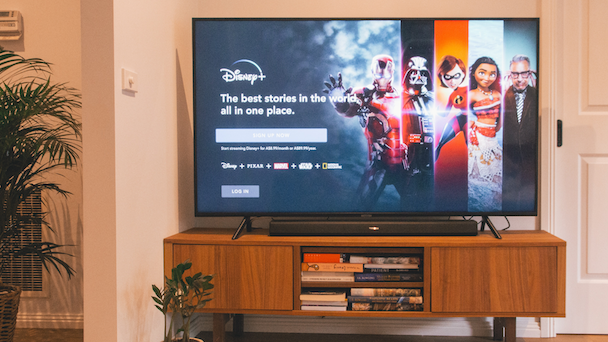How connected TV advertising can avoid the fate of display
As CTV viewing reaches an all-time high, we must ensure it doesn’t fall victim to the same pitfalls as display advertising, writes CTV intermediary FreeWheel‘s Misha Williams.

Advertisers may be wary of CTV, despite growing audiences, due to its susceptibility to fraud, Williams observes / Marques Kaspbrak
In the early days of digital advertising, display ads – the kinds of ads one finds on websites, apps and even social media – were king. They were highly visible, easy to create and buy, and provided valuable insights into user behavior.
However, as the industry evolved, so did the challenges associated with display advertising, with commoditization, fraud and a lack of transparency being the biggest issues.
Meanwhile, another form of digital advertising has emerged in recent years: connected television (CTV). CTV offers many benefits for both advertisers and consumers, including increased visibility and engagement, better targeting capabilities, efficient spending and easy ad creation – not to mention that consumers can’t get enough of it. In fact, data from eMarketer finds that CTV now reaches two out of three US viewers, and daily CTV usage has grown by over 100% since 2017, per Nielsen research. Meanwhile, popular streaming platforms are increasingly turning to ad-supported models to reach more viewers looking for free or less expensive access.
As CTV advertising continues to expand, some have wondered if it could head down a similar path as display advertising. Fortunately, with careful planning, we can ensure that this new wave of growth does not suffer from the same problems as its predecessor. So how do we do that?
Advertisement
Maintaining quality is a must
Most notably, it‘s important to ensure the quality of advertising does not change. One of the main problems with display advertising is that the quality of the media has seemed to decrease over time. This is due to several factors, including the proliferation of low-quality ad inventory and the rise of ad fraud. To avoid this problem, CTV advertising providers need to focus on quality over quantity. This means working with a smaller number of high-quality publishers and properly vetting all ad inventory.
Additionally, it is important to adopt anti-fraud measures that can help prevent bad actors from manipulating or undermining this new form of advertising. There are several different ways to do this, including using ‘allow lists’ and ‘block lists’ to screen for potential fraudsters; relying on viewability as a metric to ensure advertisers are only paying for ads they see; and constantly monitoring for invalid traffic such as bots, click farms and domain spoofing.
Advertisement
With the shift to more programmatic advertising on CTV, there needs to be additional verification that certified ads actually ran on certified content. This should include monitoring for invalid traffic and filtering both pre- and post-bid, verifying for brand-safe content (including disinformation and misinformation) and verifying supply endpoints and traffic sources at the domain and app level.
While viewers have shifted to CTV, the advertiser shift has not happened at the same rate – and this may be due to perceived fraud issues. By using the tools available for premium CTV, we can ensure the quality of the supply path and the trust between buyers and sellers.
Transparency and security remain key
In addition, two other factors necessary to ensure the success of CTV advertising include creating a more transparent media buying process and using data-enablement processes that are both accurate and privacy-compliant. These topics are often discussed in the industry as being instrumental to the future of advertising.
For instance, moving from real-time bidding to the efficiency of automated buying through premium programmatic channels enables a focus on quality inventory that is transparent and secure.
Further, implementing audience extension – which refers to using advertisers’ first-party data to define key segments and seed-related audience extension models – allows advertisers to extract insights for customer segments, expand the reach of target audiences and optimize ad campaigns. However, an important caveat: to be effective, both the display and CTV advertising providers need to use securely enabled data insights.
Advertisement
Securing the future of CTV
CTV is more than ‘just another screen.’ It has already revolutionized the way we watch TV and consume advertising. However, for it to continue to grow and succeed, we need to create a more transparent buying process, securely enable the use of data, focus on quality over quantity and prevent bad actors from undermining the CTV advertising ecosystem.
With these strategies, CTV can avoid the fate of display advertising and become a truly transformative platform for advertisers and consumers alike.
Misha Williams is vice-president of US supply revenue at FreeWheel, a CTV intermediary.